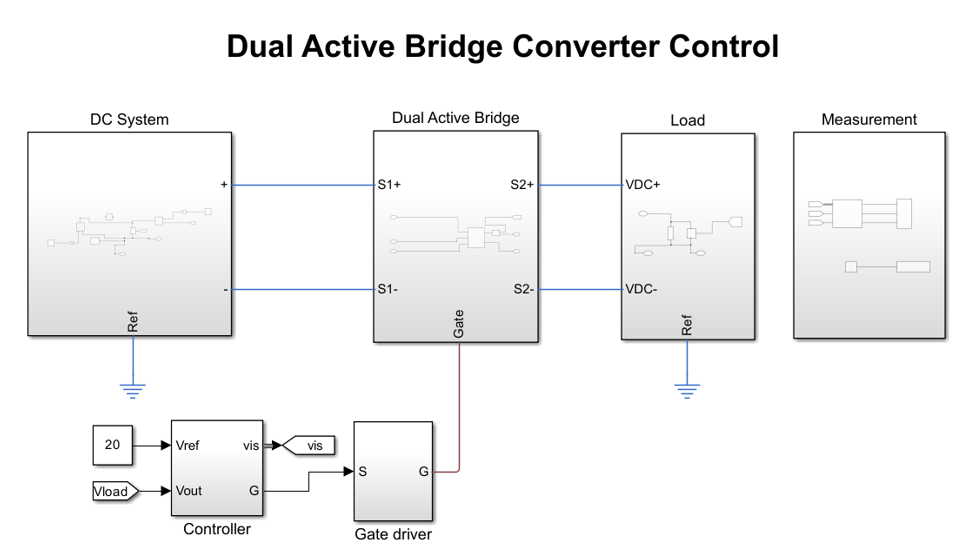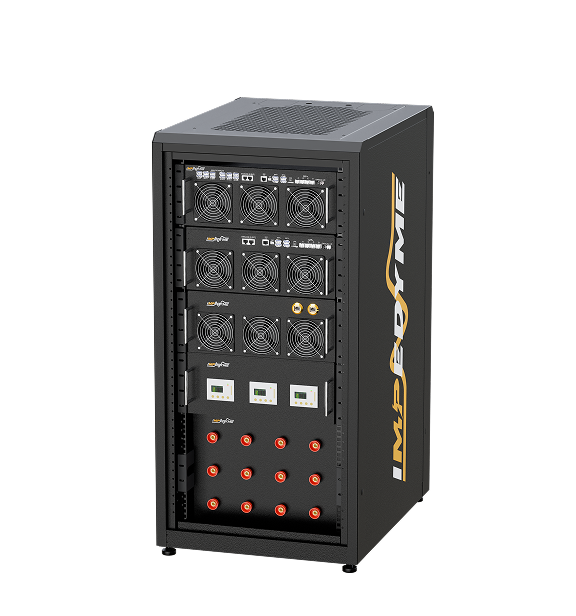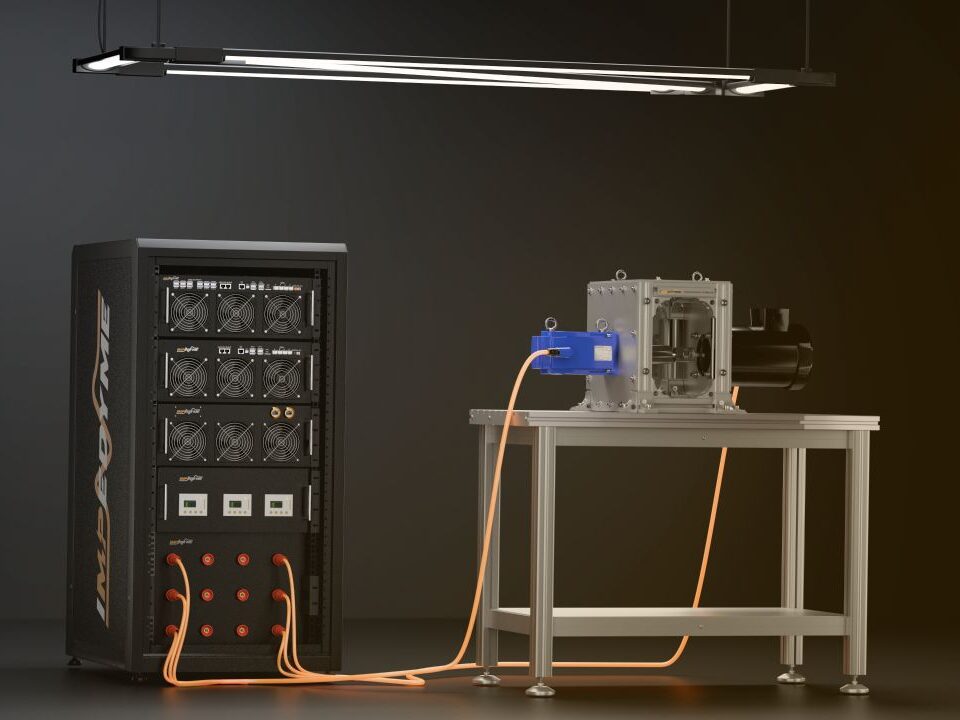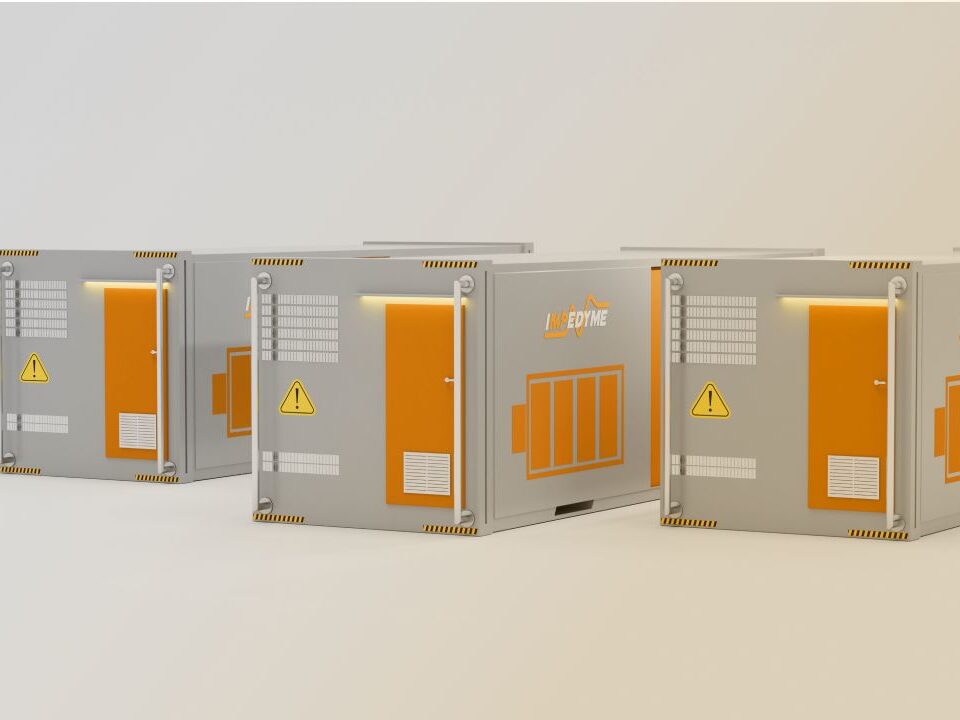
-
 Induction Motor
Induction Motor
-
 Automotive Electrical System Simulation
Automotive Electrical System Simulation
-
 DC/DC Bidirectional Converter
DC/DC Bidirectional Converter
-
 PWM Control for Brushless DC
PWM Control for Brushless DC
-
 BLDC Motor Control and Drive Simulation
BLDC Motor Control and Drive Simulation
-
 Electric Vehicle Fast Charger Simulation
Electric Vehicle Fast Charger Simulation
-
 DFIG Wind Turbine Simulation
DFIG Wind Turbine Simulation
-
 Dual Active Bridge
Dual Active Bridge
-
 EV Dynamometer Test Environment Simulation
EV Dynamometer Test Environment Simulation
-
 Electric Vehicle Simulation
Electric Vehicle Simulation
-
 Three-Phase Grid-Connected Inverter Using Direct-Q…
Three-Phase Grid-Connected Inverter Using Direct-Q…
-
 Three-Phase Grid-Connected Solar Photovoltaic
Three-Phase Grid-Connected Solar Photovoltaic
-
 Grid-Connected Rectifier
Grid-Connected Rectifier
-
 Grid-Tied Inverter System
Grid-Tied Inverter System
-
 Torque Control in a Hybrid Excitation Synchronous …
Torque Control in a Hybrid Excitation Synchronous …
-
 Wye-Delta Starting Circuit
Wye-Delta Starting Circuit
-
 IPMSM-Based Axle-Drive
IPMSM-Based Axle-Drive
-
 Simplified Parallel Hybrid Electric Vehicle
Simplified Parallel Hybrid Electric Vehicle
-
 Simplified Series Hybrid Electric Vehicle
Simplified Series Hybrid Electric Vehicle
-
 Series-Parallel Hybrid Electric Vehicle
Series-Parallel Hybrid Electric Vehicle
-
 Three-Phase Matrix Converter Simulation
Three-Phase Matrix Converter Simulation
-
 Venturini Modulation for Three-Phase Matrix Conver…
Venturini Modulation for Three-Phase Matrix Conver…
-
 Microgrid Frequency Regulation Using Vehicle-to-Gr…
Microgrid Frequency Regulation Using Vehicle-to-Gr…
-
 Three-Phase Modular Multilevel Converter
Three-Phase Modular Multilevel Converter
-
 Field-Oriented Control
Field-Oriented Control
-
 Interior Permanent Magnet Synchronous Generator
Interior Permanent Magnet Synchronous Generator
-
 Permanent Magnet Synchronous Machine
Permanent Magnet Synchronous Machine
-
 PMSM Rotor Angular Velocity
PMSM Rotor Angular Velocity
-
 PMSM-Based Electrical Traction Drive
PMSM-Based Electrical Traction Drive
-
 Maximum Power Point Tracking
Maximum Power Point Tracking
-
 Six-Phase Permanent Magnet Synchronous Machine
Six-Phase Permanent Magnet Synchronous Machine
-
 Synchronous Machine-Based Electrical Drive Simulat…
Synchronous Machine-Based Electrical Drive Simulat…
-
 Single-Stage Solar Inverter
Single-Stage Solar Inverter
-
 Three-Phase Cycloconverter Simulation
Three-Phase Cycloconverter Simulation
-
 Totem-Pole PFC Simulation
Totem-Pole PFC Simulation
-
 Twelve-Pulse Thyristor Rectifier
Twelve-Pulse Thyristor Rectifier
-
 Two-Wheeler On-Board Charger
Two-Wheeler On-Board Charger
-
 Vienna Rectifier Simulation
Vienna Rectifier Simulation
-
 High-Voltage Direct Current
High-Voltage Direct Current
-
 Wireless Power Transfer
Wireless Power Transfer

Comprehensive Documentation for Dual Active Bridge (DAB) DC-DC Converter Simulation
Table of Contents
- 1 Comprehensive Documentation for Dual Active Bridge (DAB) DC-DC Converter Simulation
- 1.1 Introduction
- 1.2 System Overview
- 1.2.1 What is a DAB DC-DC Converter?
- 1.2.2 Purpose of the Simulation
- 1.3 Key Features
- 1.3.1 High-Efficiency Power Transfer with Soft-Switching
- 1.3.2 Bidirectional Power Flow Control
- 1.3.3 Flexible Modulation Strategies
- 1.3.4 Galvanic Isolation
- 1.4 Simulation Objectives
- 1.5 Technical Description
- 1.5.1 System Configuration
- 1.5.2 Control Methodology
- 1.6 Advantages of DAB Converters
- 1.7 Applications
- 1.7.1 Electric Vehicles (EVs) and Charging Infrastructure
- 1.7.2 Renewable Energy Systems
- 1.7.3 Microgrids and Distributed Generation
- 1.7.4 Data Centers
- 1.7.5 Aerospace and Defense
- 1.7.6 Industrial Automation
- 1.8 Simulation Benefits
- 1.9 Summary
- 1.10 Future Enhancements
- 1.11
- 1.11.1 Induction Motor
- 1.11.2 Automotive Electrical System Simulation
- 1.11.3 DC/DC Bidirectional Converter
- 1.11.4 PWM Control for Brushless DC
Introduction
The Dual Active Bridge (DAB) DC-DC converter is a bidirectional power conversion topology that provides high efficiency, galvanic isolation, and fast dynamic response. It is widely used in applications such as electric vehicle (EV) charging, renewable energy integration, and energy storage systems. This project focuses on modeling and simulating a DAB converter, incorporating soft-switching techniques, power flow control, and modulation strategies. The simulation provides insights into converter performance under various load and voltage conditions.

System Overview
What is a DAB DC-DC Converter?
A DAB converter consists of two active H-bridges on the primary and secondary sides of an isolated high-frequency transformer. The phase shift between these bridges determines power transfer, enabling efficient and bidirectional energy conversion.
Purpose of the Simulation
The simulation aims to:
- Analyze the efficiency of soft-switching techniques such as Zero Voltage Switching (ZVS).
- Evaluate power flow control strategies for bidirectional operation.
- Optimize modulation techniques to enhance dynamic performance and minimize losses.
Key Features
High-Efficiency Power Transfer with Soft-Switching
Implements Zero Voltage Switching (ZVS) and Zero Current Switching (ZCS) to reduce switching losses.
➡️ HIL/PHIL Benefit: Enables real-time validation of soft-switching techniques under dynamic conditions.
Bidirectional Power Flow Control
Allows seamless power transfer between DC sources and loads, making it ideal for battery charging/discharging and grid-connected systems.
➡️ HIL/PHIL Benefit: Provides a controlled environment for testing energy storage integration strategies.
Flexible Modulation Strategies
Supports Phase-Shift Modulation (PSM), Triangular Current Mode (TCM), and Hybrid Modulation for efficiency optimization.
➡️ HIL/PHIL Benefit: Enables comparative analysis of different control methods before real-world deployment.
Galvanic Isolation
DAB converters provide galvanic isolation, enhancing safety and reducing noise in sensitive applications.
Compact Design: DAB converters are compact and lightweight, making them suitable for space-constrained applications.
Simulation Objectives
This simulation helps evaluate:
- Efficiency of soft-switching techniques at different operating points.
- Impact of phase shift control on power transfer dynamics.
- Converter performance under transient and steady-state conditions.
➡️ HIL/PHIL Benefit: Facilitates real-time tuning and optimization of control strategies.
Technical Description
System Configuration
- Input: DC power source (battery, solar, or grid-connected DC bus).
- Output: Regulated DC voltage for load or energy storage systems.
- Power Stage: Dual H-bridge topology with a high-frequency transformer.
Control Methodology
- Phase-Shift Modulation (PSM): Controls power transfer by adjusting phase difference between primary and secondary bridges.
- Zero Voltage Switching (ZVS): Achieves soft-switching to minimize energy loss.
- Current Control Loops: Regulates current flow for stable bidirectional operation.
➡️ HIL/PHIL Benefit: Enables real-time evaluation of control strategies in a simulated hardware environment.
Advantages of DAB Converters
- High Efficiency: Soft switching minimizes losses, improving overall performance.
- Bidirectional Power Flow: Supports energy storage and regenerative applications.
- Compact and Lightweight: High-frequency operation reduces transformer size.
➡️ HIL/PHIL Benefit: Enhances real-world testing of efficiency and control algorithms.
Applications
Electric Vehicles (EVs) and Charging Infrastructure
On-Board Chargers: DAB converters are used in EV on-board chargers to efficiently convert AC power from the grid to DC power for battery charging. Simulations help optimize the design for high efficiency and thermal management.
Bidirectional Charging (V2G): DAB converters enable Vehicle-to-Grid (V2G) applications, allowing EVs to feed power back into the grid. Simulations are used to test bidirectional power flow and grid interaction.
DC Fast Chargers: DAB converters are used in DC fast chargers to regulate voltage and ensure efficient power transfer. Simulations help validate performance under varying load conditions.
Renewable Energy Systems
Solar Power Systems: DAB converters are used in solar inverters to manage power flow between solar panels, batteries, and the grid. Simulations optimize efficiency and ensure stable operation.
Wind Energy Systems: DAB converters are used in wind turbine systems to regulate power flow between the generator, battery storage, and the grid. Simulations help analyze performance under varying wind conditions.
Energy Storage Systems (ESS): DAB converters are used in battery energy storage systems to manage charging and discharging. Simulations ensure efficient energy management and grid integration.
Microgrids and Distributed Generation
DC Microgrids: DAB converters are used in DC microgrids to regulate voltage and manage power flow between renewable sources, storage systems, and loads. Simulations help optimize system performance and stability.
Hybrid Energy Systems: DAB converters are used in hybrid systems combining solar, wind, and battery storage. Simulations ensure efficient power conversion and energy management.
Data Centers
Power Distribution: DAB converters are used in data centers to regulate voltage and ensure efficient power distribution between servers, storage systems, and backup power sources.
Energy Efficiency: Simulations help optimize the design of DAB converters for high efficiency, reducing energy losses and operational costs.
Aerospace and Defense
Aircraft Power Systems: DAB converters are used in aircraft to manage power flow between batteries, generators, and onboard systems. Simulations ensure reliable operation under extreme conditions.
Military Vehicles: DAB converters are used in electric and hybrid military vehicles for efficient power conversion and energy management. Simulations validate performance under harsh environments.
Industrial Automation
Motor Drives: DAB converters are used in industrial motor drives to regulate voltage and enable efficient power conversion. Simulations help optimize performance and reduce energy consumption.
Robotics: DAB converters are used in robotic systems to manage power flow between batteries, motors, and control systems. Simulations ensure precise and reliable operation.
Simulation Benefits
With this simulation, users can:
- Optimize DAB converter efficiency and power flow control.
- Evaluate different soft-switching and modulation strategies.
Analyze transient response under varying load conditions.
➡️ HIL/PHIL Benefit: Ensures a seamless transition from simulation to hardware implementation.
Summary
The DAB DC-DC Converter Simulation provides a detailed framework for studying soft-switching techniques, bidirectional power control, and high-frequency power conversion. Impedyme’s HIL and PHIL solutions enhance the development process:
| Development Stage | Impedyme’s Contribution |
|---|---|
| Control Design | RCP using HIL for rapid algorithm validation |
| Control Hardware Testing | CIL with real-time DAB converter models |
| Power Stage Verification | PHIL with real voltage and power interaction |
| Final Validation | Full-system PHIL under realistic operating conditions |
Future Enhancements
- Integration of AI-based adaptive control for efficiency optimization.
- Advanced fault detection and self-recovery mechanisms.
- Implementation of multi-level DAB topologies for higher power applications.
The DAB DC-DC Converter Simulation serves as a vital tool for developing next-generation power conversion systems. With Impedyme’s HIL/PHIL solutions, engineers can optimize converter efficiency, enhance performance, and validate advanced control strategies before real-world deployment.






